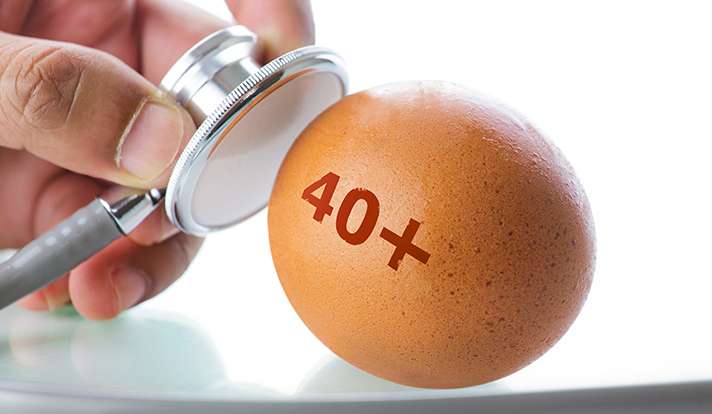The mechanisms responsible for human egg aging

Yale School of Medicine researchers have identified the molecular pathways involved in the aging of human eggs. This research could eventually lead to treatments to correct age-related damage and improve fertility in women age 40 and older.
Published in the June 6 issue of the journal Molecular Human Reproduction, the study examined the sharp decline in egg quality in women 40 and older and found that egg damage is linked to oxygen-deprived cells.
"More women are postponing childbearing, but with age, the cumulus cells that surround and nurture the eggs begin dying; we've found that this is caused by lack of oxygen," said senior author Dr. Pasquale Patrizio, director of the Yale Fertility Center and professor in the Department of Obstetrics, Gynecology & Reproductive Sciences. "This follicular hypoxia triggers a cascade of biochemical changes in the cumulus cells. This may ultimately affect chromosomal abnormalities seen in eggs of older patients."
In collaboration with Anna Pyle, Howard Hughes Medical Institute investigator and professor in the Department of Molecular, Cellular and Developmental Biology at Yale, Patrizio and his team studied samples from 20 cumulus cells in 15 patients younger than age 35 and in those age 40 and older. The team looked for differences in RNA expression in both sets of patients. They found significant differences in RNA molecules in the cumulus cells of older patients when compared to RNA expressed in cells of patients younger than 35.
Changes in the ovarian microenvironment, such as reduced oxygen supply to the growing follicles are likely causes of ovarian aging, according to Patrizio. "Our data show that cumulus cells from older women are affected by a chronic exposure to suboptimal oxygen levels, as indicated by an increased expression of hypoxia-induced genes when compared to the same cells collected in younger patients," he said.
"Our findings shed light on the mechanisms responsible for human egg aging," Patrizio added. "We have always been intrigued by the questions, 'Who is the time keeper of egg aging?' and 'How are the eggs informed of the biological clock?' Now we know that changes in RNA of the cumulus cells triggered by aging-induced hypoxia, are the key messengers. The ability to screen cumulus cells for oxygen deprivation may help us identify healthier eggs, modify ovarian stimulation protocols, and ultimately lead to more successful in vitro fertilization treatments."
More information: E. Molinari et al. Transcriptome analysis of human cumulus cells reveals hypoxia as the main determinant of follicular senescence, Molecular Human Reproduction (2016). DOI: 10.1093/molehr/gaw038

















